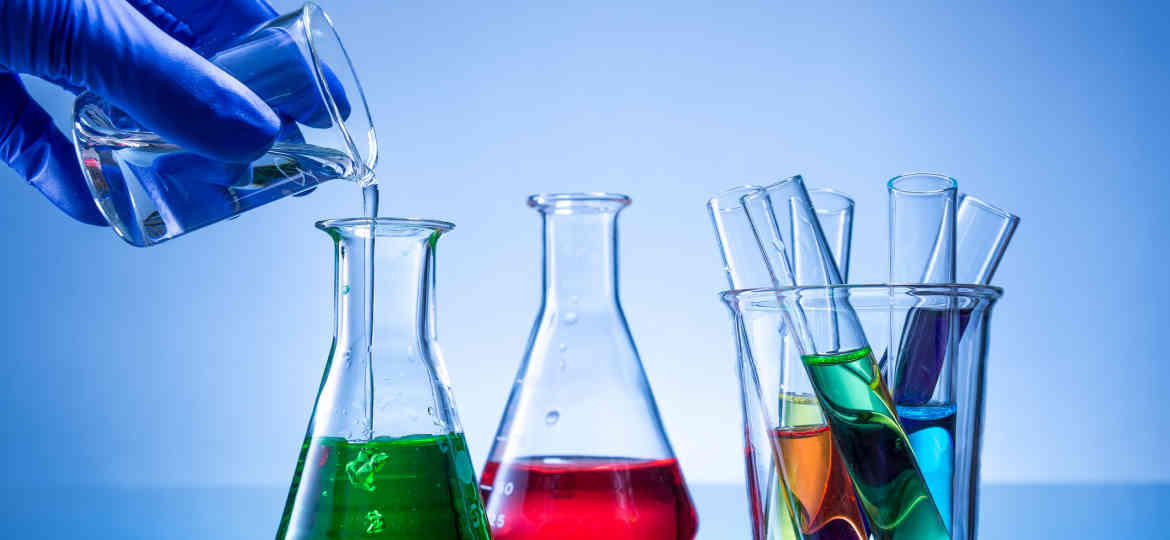Among thousands
of applications, the U.S. chemical industry plays an important role in
developing metal alloys, catalysts and agents for the environment and energy
sectors. For example, solar photovoltaic
producers use hydrochloric acid, trichlorosilane gas and nitrogen trifluoride,
to name just three of dozens. Chlorine
is vital to produce the polyester layers that make up light weight wind turbine
blades.
The domestic
market for industrial chemicals is robust, but the export market is very
important to the sector. The U.S. ran a
$33 billion surplus in industrial chemicals in 2017. The potential for natural gas exports by the
U.S. shale gas producers could help boost the U.S. industrial chemical export
surplus to as much as $73 billion by 2020.
China with its growth aspirations is an
important customer of the U.S. chemicals industry. As an example, according to the American
Chemistry Council (ACC), China imported 11% of plastic resins produced in the
U.S. in 2017, valued at $3.2 billion. In
total the U.S. shipped about $21.5 billion worth of chemicals and plastics to
China in 2017.
Unfortunately, the chemical industry finds itself
caught between an aggressive U.S. politician and his shrewd and fearless
Chinese adversary. The dust-up threatens
the U.S. industrial chemicals surplus.

In April 2018,
in response to Donald Trump’s allegations of China’s unfair trade practices and
vocalizations about tariffs, China imposed its own retaliatory tariff policy. Chemicals of all sorts are among the many U.S.
products upon which China will impose new import tariffs that could be as high
as 25%. The ACC estimates the new
tariffs could impact up to $5 billion of the U.S. chemical industry exports.
The U.S.
chemical industry has been surging ahead in recent years led by the shale gas
segment. Beginning 2011 through the
beginning of 2018, the U.S. chemical industry has commenced over 300 capital
projects valued at $194 billion in capital investment. Much of the investment is related to export
markets. Chemical sector investment has
become a significant driver of U.S. employment growth, reaching 811,000 jobs in
2017 after dropping to a low of 785,000 jobs in 2011.
A portion of the
capital investment for new chemical production, factory restarts and equipment
upgrades was already in locations outside the U.S. However, with the imposition steel tariffs by
the U.S. and retaliatory chemicals tariffs by China and others could push more
investment outside the U.S. For example,
DowDupont has already indicated that the investment case has been improved for
location outside the U.S. A new chemical
plant in a country like Argentina or Canada avoids both the U.S. tariff on
China steel and the China tariff imposed on Yankee chemicals.
|
SMALL-CAP CHEMICAL COMPANIES
|
||||||
|
Company
|
U.S. Base
|
SYMB
|
Mkt Cap
|
Sales
|
Operating
Margin
|
Debt/
Equity
|
|
Trinseo, S.A.
|
PA
|
TSE
|
$3.2 B
|
$4.5 B
|
9.7%
|
177.9
|
|
H.B. Fuller Co.
|
MN
|
FUL
|
$2.7 B
|
$2.5 B
|
6.6%
|
218.6
|
|
Stepan Company
|
IL
|
SCL
|
$1.7 B
|
$2.0 B
|
7.3%
|
37.5
|
|
Innospec, Inc.
|
CO
|
IOSP
|
$1.9 B
|
$1.4 B
|
10.2%
|
26.5
|
|
Kronos Worldwide
|
TX
|
KRO
|
$2.9 B
|
$1.7 B
|
19.6%
|
62.9
|
|
Ferro Corporation
|
OH
|
FOE
|
$1.8 B
|
$1.4 B
|
11.8%
|
210.8
|
|
Innophos Holdings
|
NJ
|
IPHS
|
$1.0 B
|
$762 M
|
10.3%
|
102.6
|
|
Kraton Corp.
|
TX
|
KRA
|
$1.5 B
|
$2.0 B
|
10.5%
|
233.8
|
|
Koppers Holdings
|
PA
|
KOP
|
$870 M
|
$1.5 B
|
9.4%
|
639.9
|
|
Omnova Solutions
|
CO
|
OMN
|
$459 M
|
$787 M
|
7.4%
|
675.5
|
Some U.S.
chemicals companies will weather this self-inflicted threat better than
others. We expect the largest U.S. chemicals
producers, which already operate globally, to easily navigate the choppy supply
chain and demand conditions. DowDupont (DWDP: NYSE), Ecolab (ECL: NYSE), Praxair (PX: NYSE), Air Products (AIR: NYSE), and Eastman Chemical
(EMN: NYSE) are among
the largest chemicals producers in the world.
However, smaller U.S. chemical companies may face greater obstacles as a
consequence of less experience in locating production in foreign countries and
more limited access to capital.
Those with lower
leverage, such as Innospec (IOSP: Nasdaq)
and Kronos Worldwide (KRO: NYSE) may find their
historic frugally will serve them well if the U.S. administration continues to
escalate the tariff war with China. Both
have experienced rising stock prices since the beginning of 2018, despite the
gloomy tariff headlines. Others in the
U.S. chemical sector with more levered balance sheets, such as Koppers Holdings
(KOP: NYSE) and Omnova Solutions
(OMN: NYSE), face
greater risk during periods of economic uncertainty. Shareholders in both companies have seen
their shares trade sideways or move downward in recent months.
Neither the author of the Small Cap Strategist web
log, Crystal Equity Research nor its affiliates have a beneficial interest in
the companies mentioned herein.
3 comments:
Wow, Great blog dear author. Thanks for sharing the information. Industrial Gas Manufacturers
nice
Soon after the Middle Ages, factories supplying soaps, alums, acids and other basic chemicals grew. In 1749, the Lead Chamber process for the commercial manufacture of hydrogentetraoxosulphate (VI) was developed. This initiated a whole new range of the chemical industries. Later in 1791, the Lebanc process for the making of trioxocarbonate (IV) was invented. Extensive industrial chemical research,Where to order Anesket however, was not in full swing until 1856 when Willian Perkin discovered the first aniline dye. Then, research by teams of scientists became the norm in chemical industry. Now in our society, you will see the raw materials used and how they are converted into the various products that are in great demand.
Post a Comment